The Usurper’s Palace’s doors hang open. The gates of death are but another place that determined souls and desperate damned can find their own way out. A soul extracted from its husk can struggle over the threshold. The very nature of death, with the Usurper holding the Palace as they do, leads to the sloshing life and the unnatural growth around the world. The Outcasts’ lands have hydras erupting from the ground, as death itself fails to take hold.
It is a world where death struggles to last.
Warning: Wizards employees, this post contains unsolicited designs of custom magic cards.
And this time, this October, as everyone is doing spooky stuff, what did I do? An entire month dedicated to the cards in the Usurper’s Palace that cared about death, dying, and of course, the graveyard. Why, that’s hack stuff, you may say and yes, you’re right, but also, it’s hack stuff because it works and it’s reliable. That’s why all the cards in this month were cards that somehow cared about death.
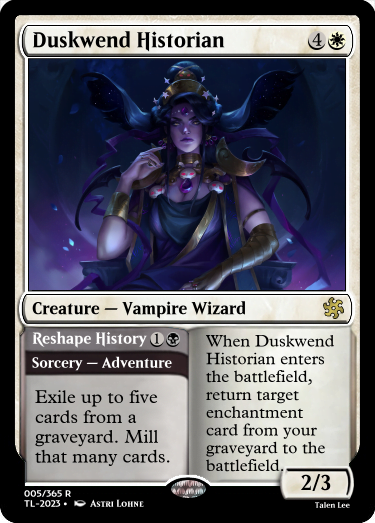
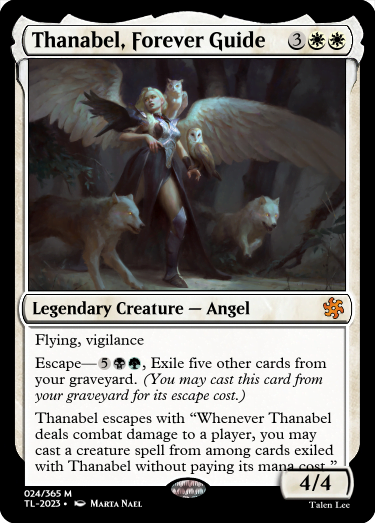
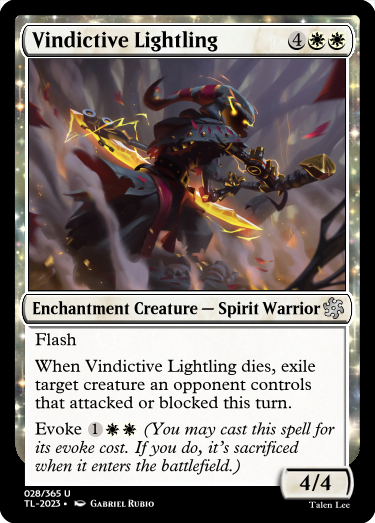
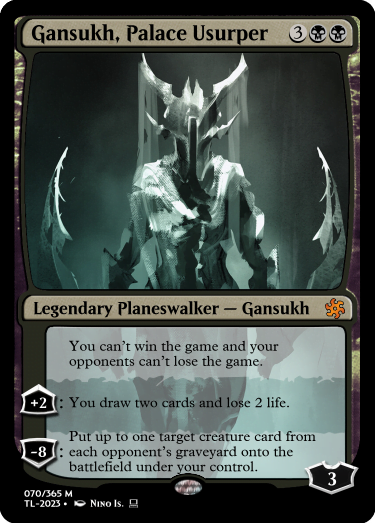
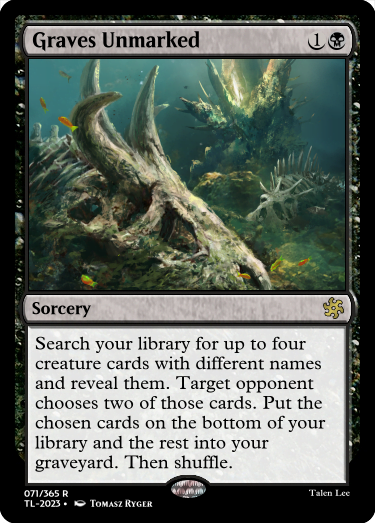
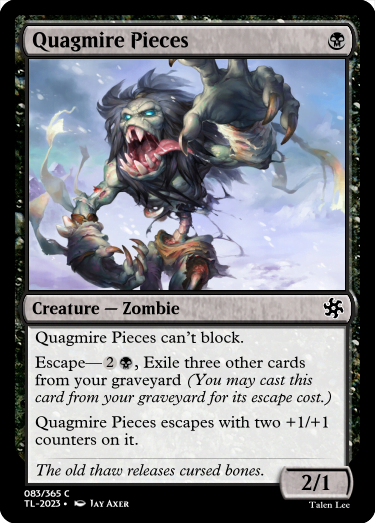
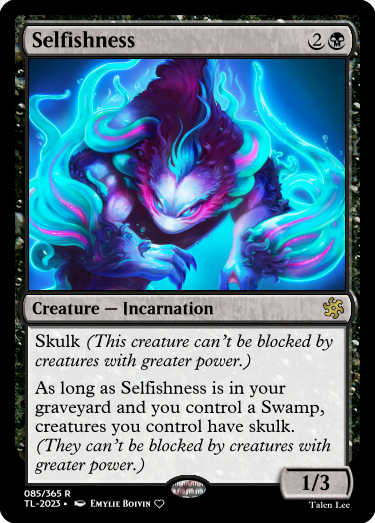
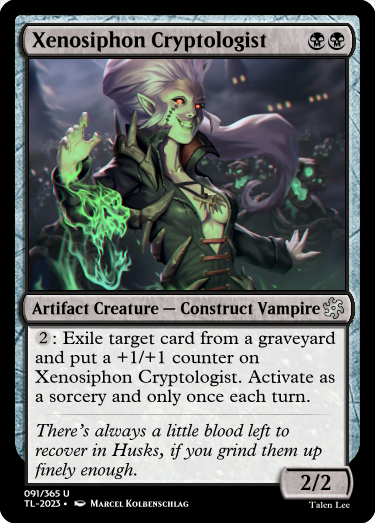
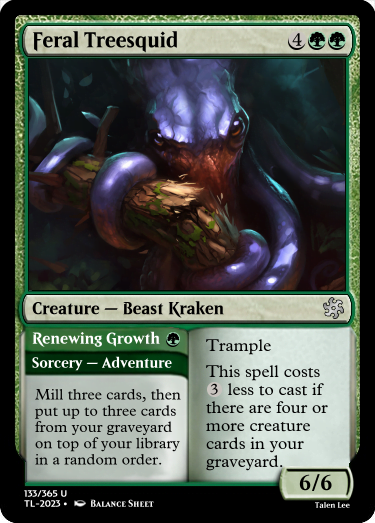
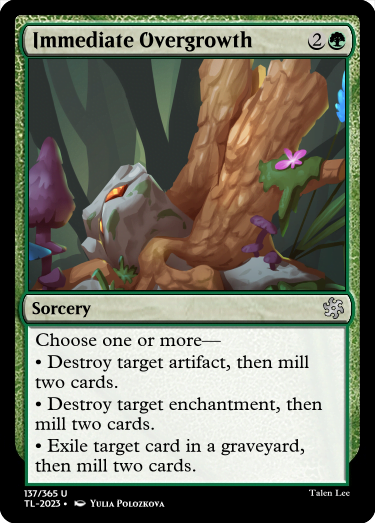
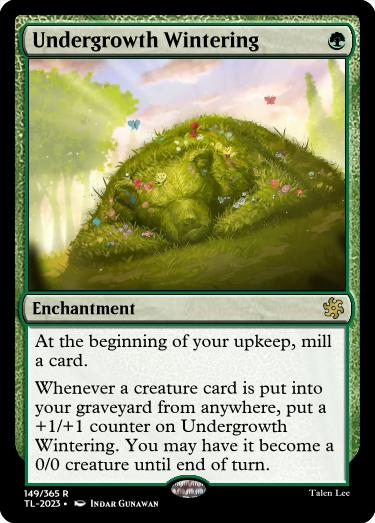
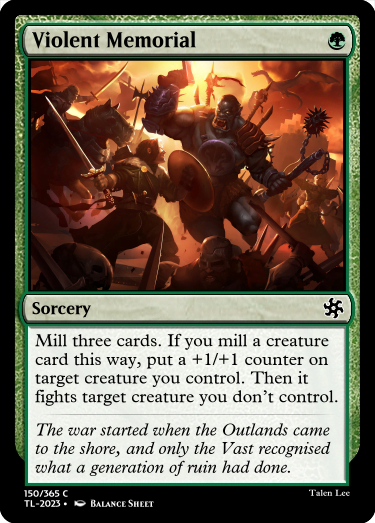
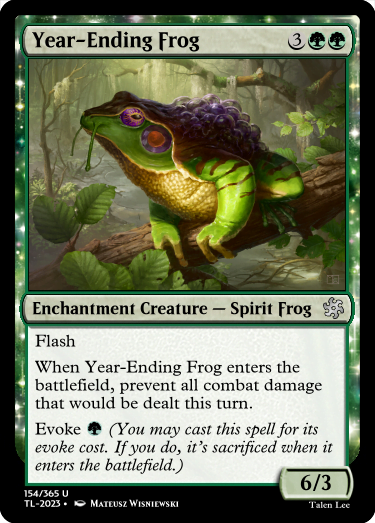
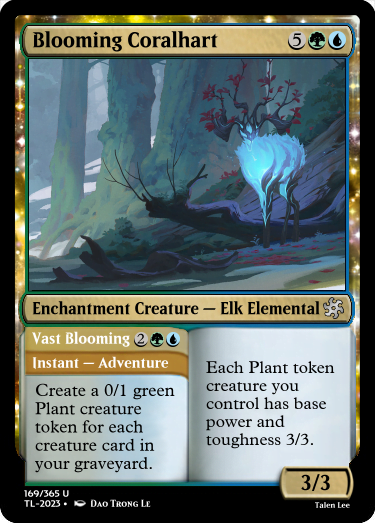
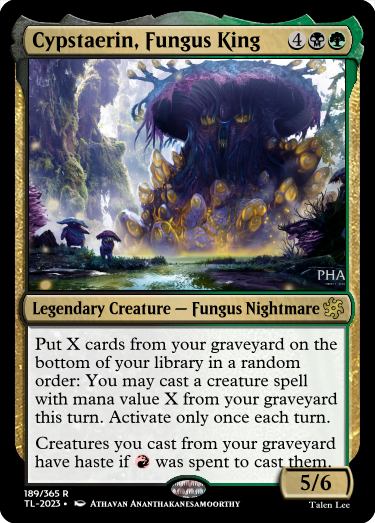
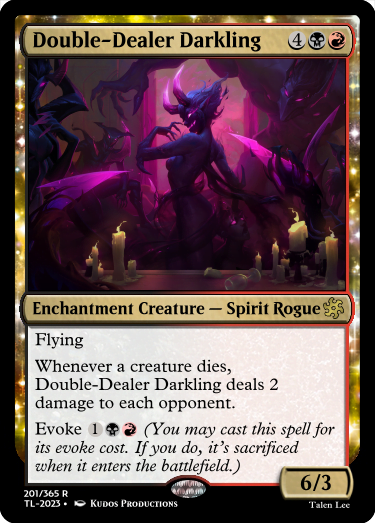
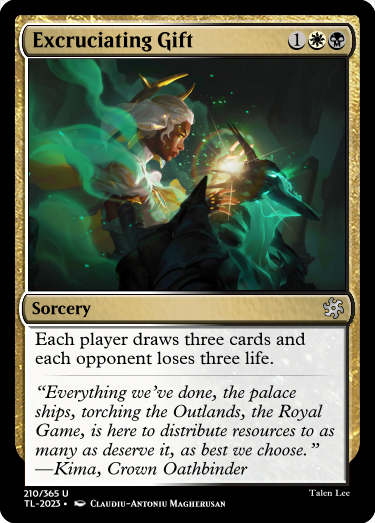
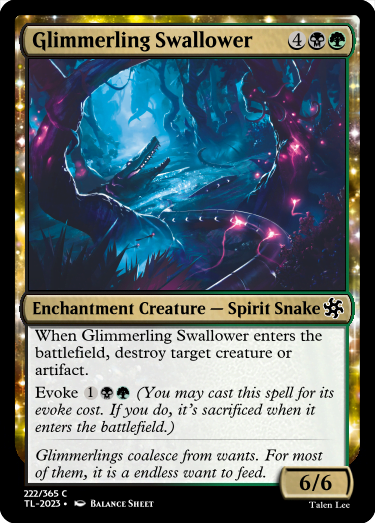
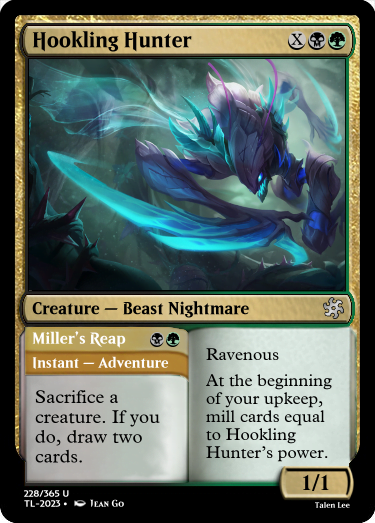
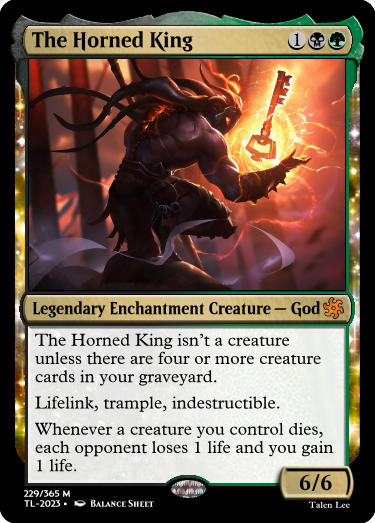
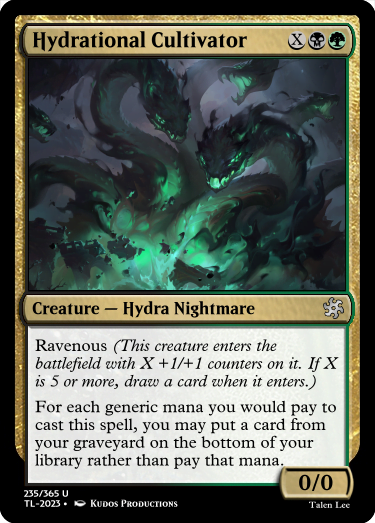
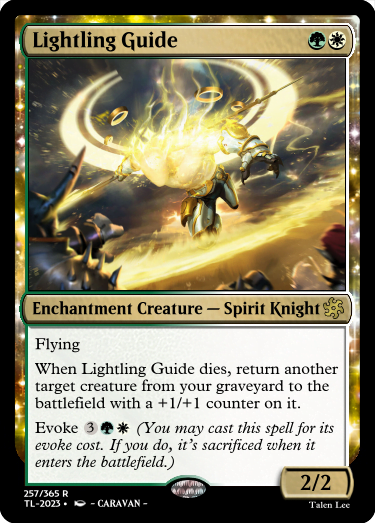
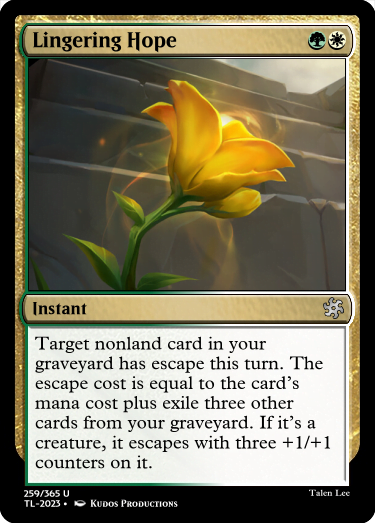
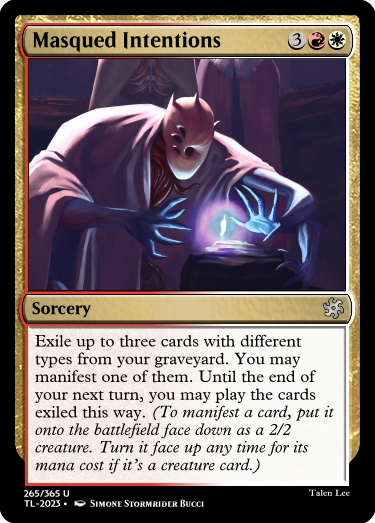
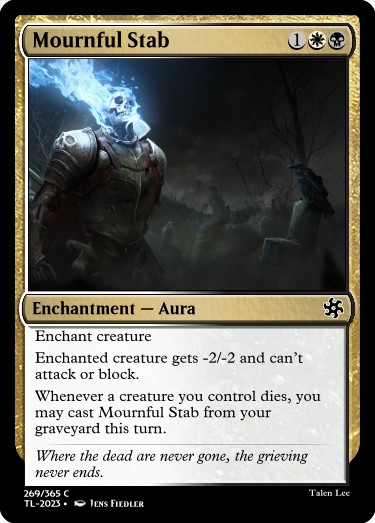
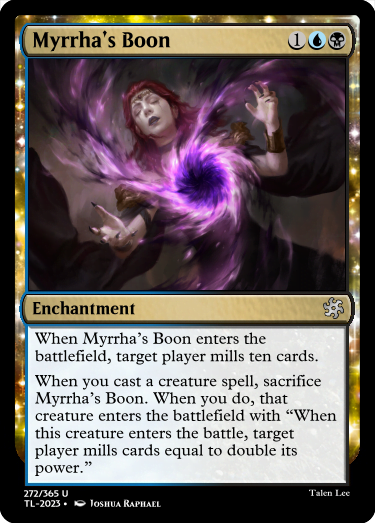
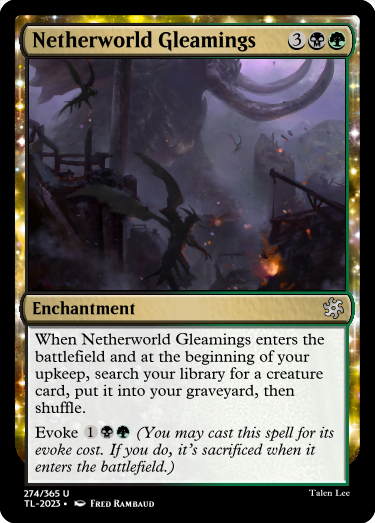
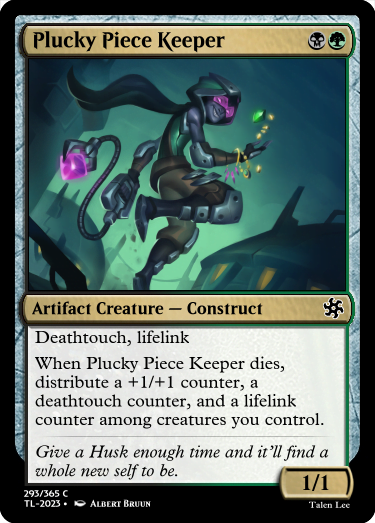
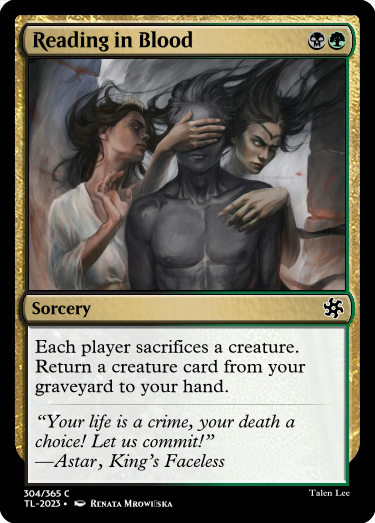
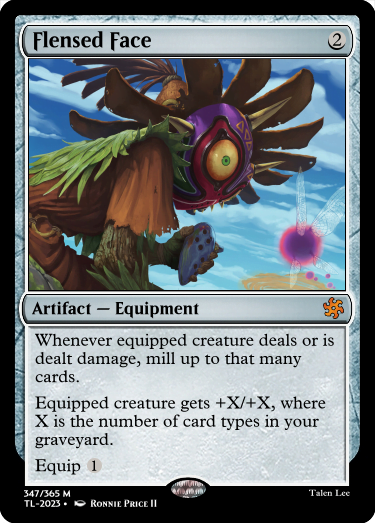
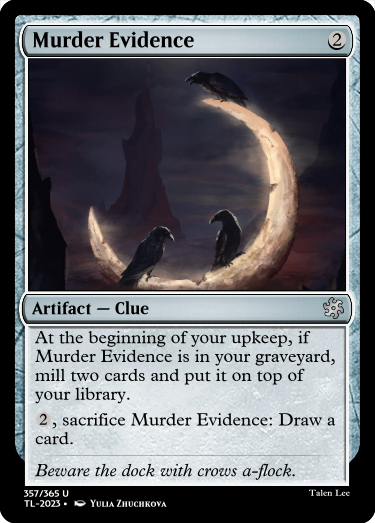


There’s definitely a bias towards some classic deathly themes, but thanks to having escape and husks to work with, I was able to ensure there were other things that connected to this same space in all the colours.
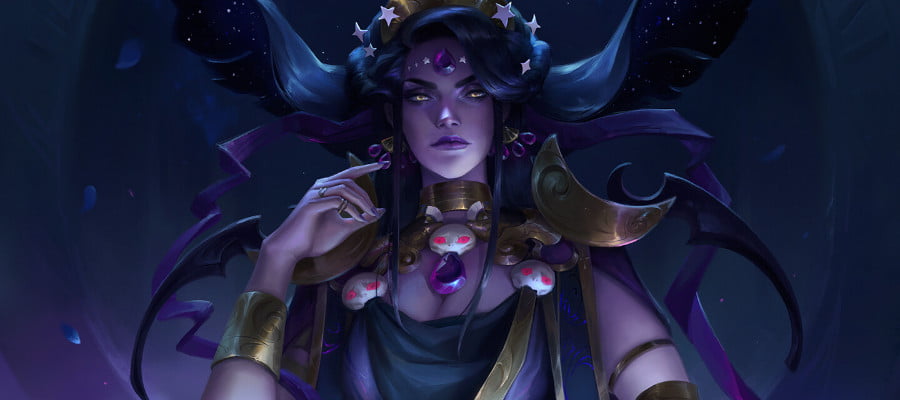
Finally, we have the introduction of the Usurper of the set’s title, the character whose initial instigating action set the story in motion: Gansukh. They’re a planeswalker, yes, but where they’re from is unknown; indeed, much about them is unknown, because their pursuit of eternal life, at all costs, led to them finding this plane, with its Palace that made death into a place and not a process. Some time ago – immeasurable years, by their reckoning – they stepped into the throne and made the Palace their own. They couldn’t die, if they controlled the place that was death.
The gates of the Palace stay open while Gansukh is there; they get wider to permit more to escape or they get narrower to keep the undead population low, but they never close; the world is fundamentally one where death has the door open, at least a crack. People have their ideas as to why; a popular one is that if the palace doors close with Gansukh inside, they will be, finally, actually, dead – and when the palace doors open up again, there will be nobody inside; the final, quiet, graceless transformation into a tomb.
Gansukh being there is what let the Vampires proliferate; making undead was easy when death is cheap. Gansukh being there is what meant the system of selling your body and blood for survival and the spread of husks and spirits could happen. Gansukh brought a new order of life and death, where the dead never truly passed and all the life just swelled around in a tiring bubble. The vampires rose and needed a new territory to claim as their own, and so they took to the seas. They needed vast palaces, so they raided the outlands and burned down their first forests and set up border patrols to keep the subjugated peoples down. The palace boats formed the casinos and the parties and the foolish decadence that lured Ullaine, and she was so captivated by the dance of the culture and the reckless opportunities for love she snared the culture around planeswalkers. The Vast, with its endless cycle of thinking deaths, was arrested by Gansukh and now the ocean under the Palace teems with life that would normally never grow so big.
Everything is Gansukh’s fault.
And they hate their job. They hate the throne, they hate the palace, they hate how they are and they hate their life. But they are not leaving.
No.
That would admit that they were wrong.
It’s not like this world is about to produce a god of death that can find a way to challenge them, after all.
The Horned King is a god of death grown out of the roiling broken earth of the green-black bayous that remain of what became the outlands. It is a shape, stalking its way towards the Palace of Death, angry and resentful and insistent. It also has big scary horns that people keep trying to break and finding things going badly for it.
Astar, well, they haven’t shown up on a card yet, so this is a first appearance. They do seem to be a bit of a, a firebrand here? Someone who is somehow deeply upset about the way things are, and recruiting others to join them.
Cypstaerin, you won’t see on any other cards, because they are a big, unthinking, inhuman pile of fungus that doesn’t understand the cycle of death or life in the first place. Death, it thinks, exists as an extant form of life; there is merely the processing of the spores, the spreading and the creation and the competition. Cypstaerin is a player in the Outlands, fighting against the ravenous beasts, but also its influence is pushing things to an even more terrifying insistence on not dying.
Thanabel, then, Thanabel is someone who has been to the palace; she is an angel, and she starts out pretty unremarkable. But once she’s slain and makes her way to the Palace, and realises she can just walk out, she realises she can bring people with her, restoring them to life. In the narrative in my mind, I do not know per se who this happens to, but it seems to me to be a clear example of story-and-mechanic uniting to have a major character die in act 1, along with Thanabel, and for Thanabel to guide them out.
Or maybe she walks out with Nugai.
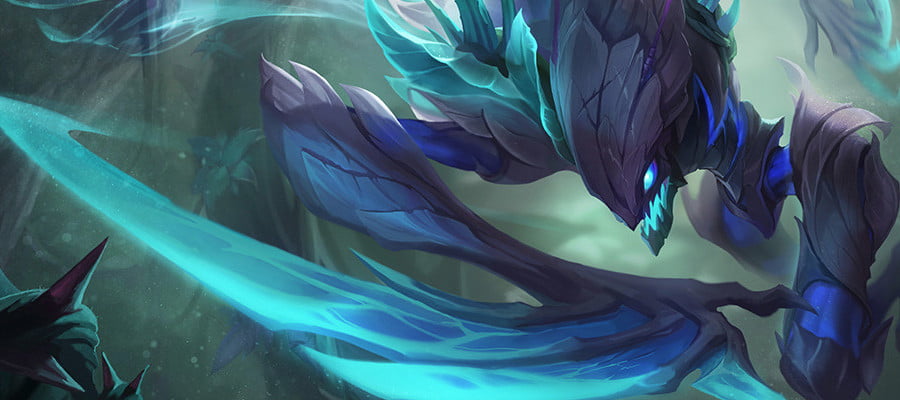
I feel like this is where almost all the Evoke got to hang out, in the end. I like the evoke cards a lot – particularly I like the flavour of the Evoke creatures all being enchantment creatures as well. They kind of remind me of the Mirage flash-enchantments, things that once upon a time had Substance.
I like the lightlings, darklings, and glimmerlings dividing up the three different ways you can approach the idea of ‘giving life.’ What holds you to life, what drives your life, that kind of thing. Glimmerlings sit fat and slack in green base; it’s things like prey drive or sustenance or spreading and growing. The urge of a life that wants things to be mostly the way they already are and is willing to fight over it, that complacent endurance, that’s something Glimmerlings are good at. They’re cope basically. Lightlings, on the other hand, they have an ideology, a principle, and that can mean they actually are built to last. Lightlings often have some effect when they die, but if they don’t use that effect they’re largely just still hanging around. And of course, darklings, they’re built around a want – an urge like revenge or acquisition or regret. Once they sort that out, they just dissolve out.
This isn’t to say they map always onto the three colours; there’s definitely at least one glimmerling that’s not green that’ll come up later.
If I had a favourite card here, it’d be this little package of Stuff I Like:
I like the type of creature it is; it seems to be a mix of a crab and dinosaur and some kind of big forest bug all at once. Its adventure is a value tool and the creature you get rewards a lot of different graveyard strategies, without being completely worthless in combat as well.
The Feral Treesquid is a weird one because it originally represented part of a greater mechanic, checking the yard for a number of cards. But that mechanic is now largely isolated to just the treesquid and the Horned King.
Bonus tidbit: There’s a legendary vampire with a chunk of the Horned King’s horn in her that makes her a dreadful threat to the maw.
The Usurper’s Palace (USP) is a collection of Custom Magic cards made with the general structure of a commander draft set. The cards are posted, one per day with different themes every month, to the Custom Magic subreddit, on my Mastodon and Cohost. Follow along for more!
